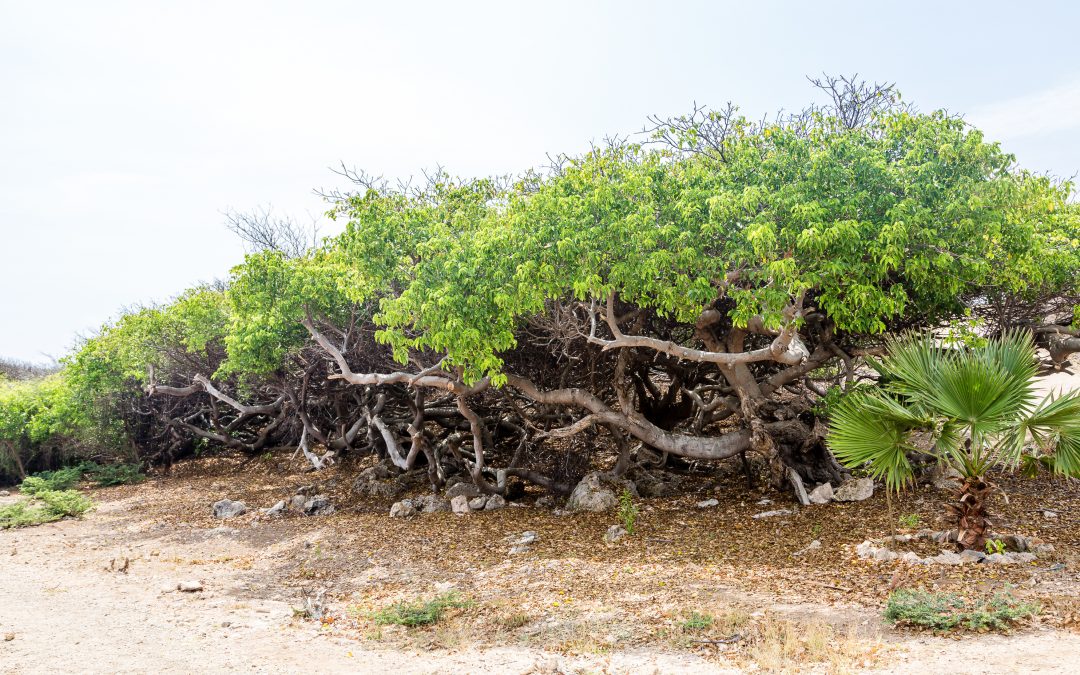We all know that trees are vital to our earth’s ecosystem as they clean the air, absorb pollution, provide shade, prevent soil erosion, and provide habitats and food for many of earth’s inhabitants. But did you know there is a tree that is so poisonous, even breathing the air around it can be fatal?
The Manchineel
Closeup of yellow green leaves on branch of poisonous manchineel tree on Caribbean island of Isla Culebra in Puerto RicoThe manchineel tree is native to Florida’s mangrove swamps, the Caribbean, and parts of South America. Just about every part of this tree is toxic to humans, from the leaves to the fruit to the bark to the air around it.
These beautiful trees have bright green leaves, shaped roughly like arrowheads. They have yellowish flowers and reddish bark. The manchineel’s fruit looks like a small green apple and, supposedly, tastes like a plum. Since eating the fruit will bring on violent stomach cramping and vomiting, it’s unlikely that anyone will be doing a taste test anytime soon.
The manchineel is so toxic, rubbing against the bark can cause burning to the skin and temporary blindness. Ingesting the tree’s sap or breathing the air near it for prolonged times can be fatal. Rumor has it that the manchineel tree was the cause of death for famed explorer Juan Ponce de Leon.
How Do You Avoid It?
Fortunately, because of their highly toxic nature, manchineel trees are no longer commonly found in Florida neighborhoods. But many tourist areas and some rural properties do have these endangered trees. Areas with high tourism have warning signs posted near the manchineels; heed those warnings!
Backpackers and campers should learn how to recognize these trees and stay completely away. If there is any doubt as to a tree’s identity, don’t go near it. Property owners who suspect they have a manchineel tree should call a tree specialist immediately. Do not try to remove it; leave it to the tree removal experts at Tampa Tree.
Why Is It Still Here?
With such a dangerous and deadly nature, you might wonder why the manchineel is still around. Why haven’t we tried to eliminate it? In spite of its toxicity, it serves several purposes. It provides a habitat for the few animals who are immune to its poison. It helps significantly in preventing soil erosion, and it serves as a very effective windbreak. The manchineel is vital in its ecosystem. But humans be warned: stay away.



